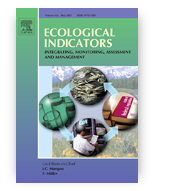Fertility and quality of arable soils in Poland: spatial–temporal analysis of long-term monitoring
Paweł Tomczyk; Aleksandra Wdowczyk; Barbara Wiatkowska; Agata Szymańska-Pulikowska; Alban Kuriqi
Ecological Indicators
Ministerial score = 200.0
Journal Impact Factor (2023) = 7.0 (Q1)
 Soil quality is a globally important issue from the point of view of food production, maintenance of appropriate environmental quality and ecological balance. Assessing its quality and fertility using indices is one of the methods that make it possible to formulate recommendations for good soil management. The aim of the study was, therefore, to determine the spatial and temporal distribution of soil properties in the context of soil quality assessment (SQI) and soil fertility assessment (SFI, SEF, NIV, and SSFI) using the example of a Central European country (Poland). The inverse distance-weighted spatial interpolation technique was used to estimate the spatial distribution of soil quality and fertility indicators. So far, no research has been carried out that would include a comprehensive analysis of soil fertility and quality indicators in such a large research area over many years. The results of 216 points of monitoring the chemistry of arable soils in Poland from the period 1995–2020 for 28 physicochemical soil parameters were considered. The analyses carried out showed significant variability in the properties of the described soils in Poland, as evidenced by the principal component analysis (PCA) and the coefficient of variation (exceptions: bulk density, pH). It was found that heavy metals (Zn, Cd, Cu) were responsible for the deterioration of soil properties. The results obtained for different indices were different (SFI – most soils with good fertility, SEF – high fertility, NIV – soils highly enriched with nutrients, SQI – average soil quality). It was found that the SSFI is the most appropriate indicator among the analyzed indicators for Polish conditions in relation to arable soils, as it is adapted and calibrated to the specifics of this area. The Spearman correlation matrix showed that the largest group of statistically highly significant parameter pairs belonged to heavy metals (Ni/Zn, Zn/Pb, Zn/Cu, Ni/Cu). In contrast, the strongest correlations were recorded for Ni (with effective cation exchange capacity (ECEC), Mn, Mgav, Zn, Cu). The assessment revealed limiting factors and temporal trends in the overall evaluation of the quality of the country’s agricultural soils, which are important from the point of view of both sustainable development and agricultural production.
Soil quality is a globally important issue from the point of view of food production, maintenance of appropriate environmental quality and ecological balance. Assessing its quality and fertility using indices is one of the methods that make it possible to formulate recommendations for good soil management. The aim of the study was, therefore, to determine the spatial and temporal distribution of soil properties in the context of soil quality assessment (SQI) and soil fertility assessment (SFI, SEF, NIV, and SSFI) using the example of a Central European country (Poland). The inverse distance-weighted spatial interpolation technique was used to estimate the spatial distribution of soil quality and fertility indicators. So far, no research has been carried out that would include a comprehensive analysis of soil fertility and quality indicators in such a large research area over many years. The results of 216 points of monitoring the chemistry of arable soils in Poland from the period 1995–2020 for 28 physicochemical soil parameters were considered. The analyses carried out showed significant variability in the properties of the described soils in Poland, as evidenced by the principal component analysis (PCA) and the coefficient of variation (exceptions: bulk density, pH). It was found that heavy metals (Zn, Cd, Cu) were responsible for the deterioration of soil properties. The results obtained for different indices were different (SFI – most soils with good fertility, SEF – high fertility, NIV – soils highly enriched with nutrients, SQI – average soil quality). It was found that the SSFI is the most appropriate indicator among the analyzed indicators for Polish conditions in relation to arable soils, as it is adapted and calibrated to the specifics of this area. The Spearman correlation matrix showed that the largest group of statistically highly significant parameter pairs belonged to heavy metals (Ni/Zn, Zn/Pb, Zn/Cu, Ni/Cu). In contrast, the strongest correlations were recorded for Ni (with effective cation exchange capacity (ECEC), Mn, Mgav, Zn, Cu). The assessment revealed limiting factors and temporal trends in the overall evaluation of the quality of the country’s agricultural soils, which are important from the point of view of both sustainable development and agricultural production.
DOI:10.1016/j.ecolind.2024.112375









